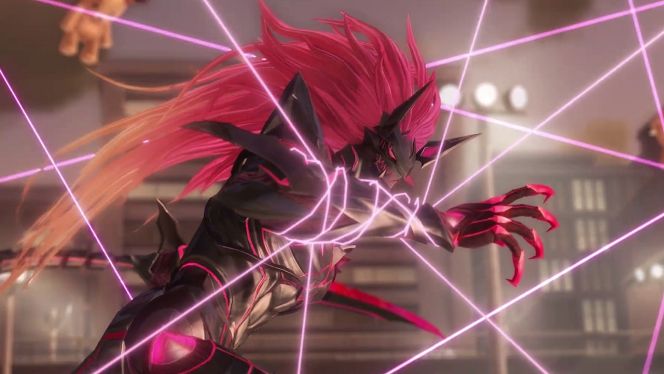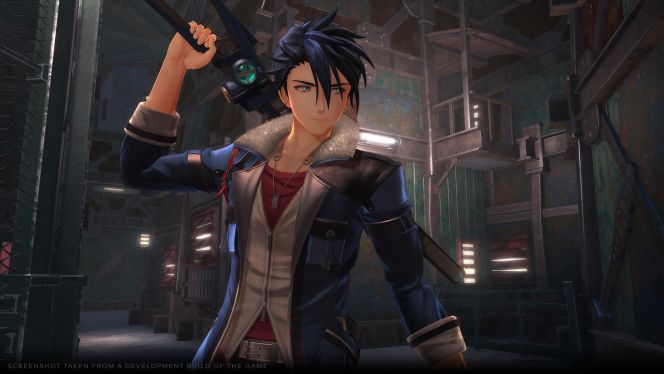REVIEW – The Trails series has always stuck to a well-worn blueprint. Every installment follows the same core structure, with a fixed number of chapters, and often comes in trilogies or duologies where the setting barely changes between entries. Before diving in, it’s worth understanding this upfront—these games are all about extensive dialogue and serialized storytelling rather than cutting-edge graphics, new mechanics, or reinvented worlds.
If this comes as a surprise, you’ve probably never played a Trails game before. So let’s get one thing straight: Trails Through Daybreak II is not the place to start. This is a direct sequel to Daybreak I (obviously), which launched last year. While the game does offer some recaps, you’d still be jumping into the middle of an ongoing story. The first Daybreak, however, was a fantastic entry point for newcomers—if you missed it, check out our review from last year.
Now, for those of you still here, what I’m about to say won’t be shocking: Trails Through Daybreak II largely reuses the same locations, animations, and systems from its predecessor. You’re essentially getting the same game, just with a new story set a few months later. Of course, there are some new mechanics and additions we’ll discuss later, but ultimately, if you liked the first one, you’ll enjoy this too. That said, a sequel can easily crash and burn with a weak story—but luckily, that’s not the case here. Trails Through Daybreak II ups the stakes, delivers a more gripping narrative, and keeps the momentum going from start to finish.
Raiders of the Lost Ark
Trails Through Daybreak II kicks off a few months after the events of the first game. Van Arkride is running Arkride Solutions solo—handling the kind of morally gray “Spriggan” cases that the Bracers Guild and the police can’t (or won’t) touch. His old crew has scattered, promising to return, but in the meantime, things have been eerily quiet in Calvard’s capital.
Until now. Suddenly, a new Grendel emerges—a man capable of transforming into a monstrous form that bears an uncanny resemblance to Van’s own mysterious power. As bodies pile up and destruction spreads, Van becomes suspect number one. Fortunately, he doesn’t have to clear his name alone—Agnes and Elaine join him to track down the beast. What follows is deep in spoiler territory, and yet, we’re still just wrapping up the prologue! Expect new abilities, time-travel shenanigans, a colorful cast of new villains, the final Genesis, and a hunt for the remnants of the Almata crime syndicate.
While Trails Through Daybreak II is a direct continuation, it still has a few surprises up its sleeve. Yes, the dialogue is still absurdly long, and yes, there are still way too many pointless cutscenes (seriously, what’s with all the random movie set moments?), but the game manages to recapture that initial sense of intrigue almost immediately. It’s not just about finding the last Genesis—there’s a bizarre new time-travel mechanic, the story branches in two directions, and the enemy Grendel even has its own sinister red version of Mare AI. There’s plenty here to keep you hooked, and despite the familiar framework, it all feels surprisingly fresh.
Endless Daybreak
Players who’ve already conquered Trails into Reverie will recognize two returning characters making their way into this installment. I haven’t played that one myself, but Van clearly knows them, and after a few scenes, it doesn’t really matter whether you started with Daybreak I or jumped in here. Longtime fans will, of course, get a kick out of seeing them back in action. These two essentially serve as “stand-in Spriggans,” each with their own branching “B” storylines that become available right from Chapter One.
As expected, the game kicks off in Edith, the capital of Calvard—Van’s home turf. Most of the locations remain the same from the previous game, which makes sense; after all, cities don’t radically change in a matter of months. Still, I sighed, bracing for an experience that might feel too familiar. But barely an hour in, I was already discovering brand-new districts, fresh hubs, new shops, and even unexpected event spaces—like the Grand Circuit, where high-stakes car races unfold. I was genuinely surprised by how much effort had gone into expanding the city beyond what I had anticipated.
And just when I thought I had a handle on things, the prologue wrapped up, and Chapter One whisked Van away to a completely different city. So if you were worried that this sequel would just be a rehash of recycled assets and locations, you can breathe easy. Yes, there’s some overlap—that’s expected in a direct continuation. But if you fell in love with these characters the first time around, you won’t be disappointed. Everyone’s back in top form, and the story, dialogue, and interactions remain as engaging as ever. Meanwhile, the world, the locations, and many other elements—aside from the core Trails DNA—have been refreshed, injecting new life into the experience.
Dawnwalker
Now, let’s talk about the new mechanics! Your AI companion, Mare, has a bigger role to play this time, complete with her own mini-games. One involves a virtual hacking maze to unlock certain treasure chests—not groundbreaking, but a neat little addition. The other, however, is the real game-changer.
Trails Through Daybreak II introduces the Marchen Garten, an expanded virtual reality battle simulator carried over from the first game—this time reworked into a full-fledged dungeon tower. It’s clearly inspired by Persona 5’s Mementos: an optional, seemingly endless labyrinth where you can grind levels to your heart’s content. I’ve always appreciated features like this in JRPGs—even if I don’t aim for a 100% completion run, it’s reassuring to know that if I hit a difficulty spike, I can always take a detour, level up, and come back stronger.
The Garten also further expands the Xiphas system—your in-game smartphone. Now, as you explore both the real world and the virtual one, you’ll collect data packets that Mare excitedly converts into various items through the Garten menu. It’s an unexpectedly efficient loot system, helping to offset the constant money struggles I faced throughout much of the game.
Just Another Day for Van Arkride
For every new addition, something’s been tweaked or rebalanced. In Daybreak II, the game limits how frequently you can unleash the high-damage, turn-breaking S-Breaks. In the first game, you could max out your shards and spam these devastating attacks, especially if you managed to stun your opponent. This time, S-Breaks come with a cooldown mechanic—once you fire one off, you’ll have to wait until your shard boost resets before using it again.
I also noticed that bosses and enemies tend to stay stunned for a few turns longer than they did in the first game—probably to encourage players to make use of the new dual attack system when they don’t have an S-Break at the ready. It’s a minor tweak, nothing game-breaking, but it definitely forces you to rethink some of the old tricks that worked so well in the previous entry. No doubt, players will find new exploits, but expect that some of the cheese strategies from the first game might not cut it this time around.
The last thing I’ll say about combat is that Trails Through Daybreak II is noticeably tougher than its predecessor—partly due to the aforementioned changes. Even on normal difficulty, with my party at the recommended level (matching the floors of Marchen Garten, for example), I found myself getting wiped by enemies that simply had too many turns and dealt more damage than I could realistically heal before they struck again. More than once, I had to make use of the “weaken enemies” accessibility option after a rough loss just to keep going.
New Dawn, Same Trails
As the saying goes: the more things change, the more they stay the same. For Trails games and for Falcom as a developer, that’s both a blessing and a curse. From its very first entry, Trails in the Sky, the series set a high standard for narrative depth, mature storytelling, and consistency. That dedication came at a cost—Falcom never prioritized cutting-edge visuals, instead opting for a steady release cycle that has kept the series rolling for over a decade without major gaps.
Trails Through Daybreak II and its predecessor represent the visual peak of the franchise, but they’re hardly pushing the boundaries of modern gaming hardware. That said, they’re not trying to. Few JRPGs can match this level of writing, depth, and world-building, especially across such a vast timeline of interconnected games. So don’t worry—this is yet another rock-solid Trails entry, packed with 80+ hours of drama, compelling character arcs, and intricate storytelling, all without missing a beat.
-Gergely Herpai „BadSector”-
Pros:
+ Impeccable writing and character development
+ Graphics still lag behind today’s level
+ Long, meaningful gameplay
Cons:
– Difficulty level is sometimes brutal
– Dialogues and transitions are visually cheap
– Some previously familiar mechanics have disappeared or changed
Publisher: NIS America
Developer: Nihon Falcom
Style: Role Playing Game (RPG)
Release Date: February 14, 2025
Trails Through Daybreak II
Gameplay - 8.4
Graphics - 7.1
Story - 8.8
Music/Audio - 8.2
Ambience - 8.8
8.3
EXCELLENT
Trails Through Daybreak II continues Van Arkride’s journey in the Republic of Calvard, delivering a deep, strategic combat system and a masterfully crafted narrative. While the visuals may not be cutting-edge, the sheer depth of the story and gameplay make it a must-play for any JRPG fan.









![[TGA 2025] Diablo IV: Lord of Hatred: A Character Class Returns! [VIDEO]](https://thegeek.games/wp-content/uploads/2025/12/theGeek-diablo-4-expansion-2-lord-of-hatred-paladin-skovos-horadric-cube-302x180.jpg)









Leave a Reply